3 ways to create an electronic signature in Excel
While electronically signing Excel files isn’t as common as signing PDFs or Word documents, it’s still expected (and even preferred) in some business scenarios.
Fortunately, creating electronic signatures in Microsoft Excel is a straightforward process.
In this article, we’ll show you three ways to add an electronic signature to a Microsoft Excel file.
1. Sign with a signature line and a visible signature in Excel
When you need to e-sign an Excel file, the digital signature tools provided by the software can be used to create legally binding signatures.
To create digital signatures in this way, you’ll need a signing certificate to prove your identity.
These are issued by a certification authority and can be acquired through Microsoft partner services.
Once you’ve acquired your own signature certificate, follow the steps below to sign your Excel document:
1. Open the Excel document.
2. Use the cursor to select the area where you want your signature to go.
3. Click the Insert tab and then select Text > Signature Line > Microsoft Office Signature Line.
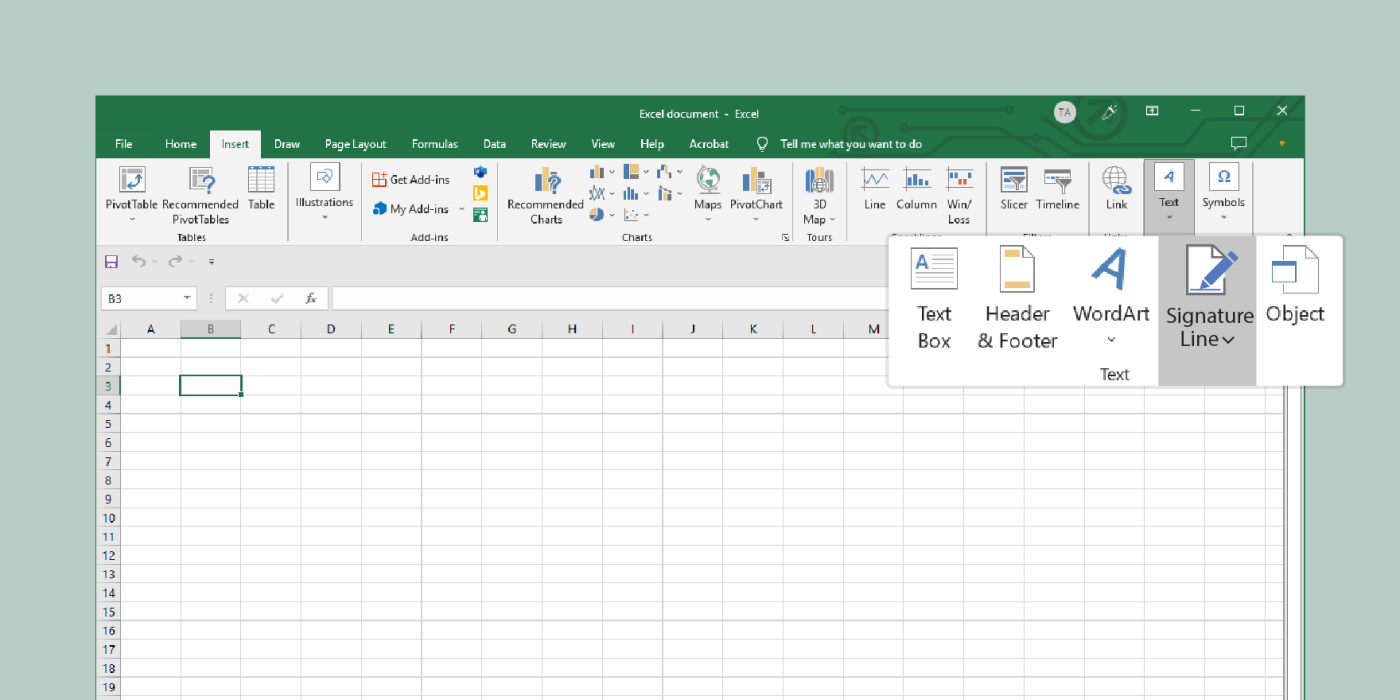
4. A Signature Setup dialogue box will appear. Enter the information you wish to appear:
- Suggested signer. The recipient’s name (if you are signing the document, this will be your name).
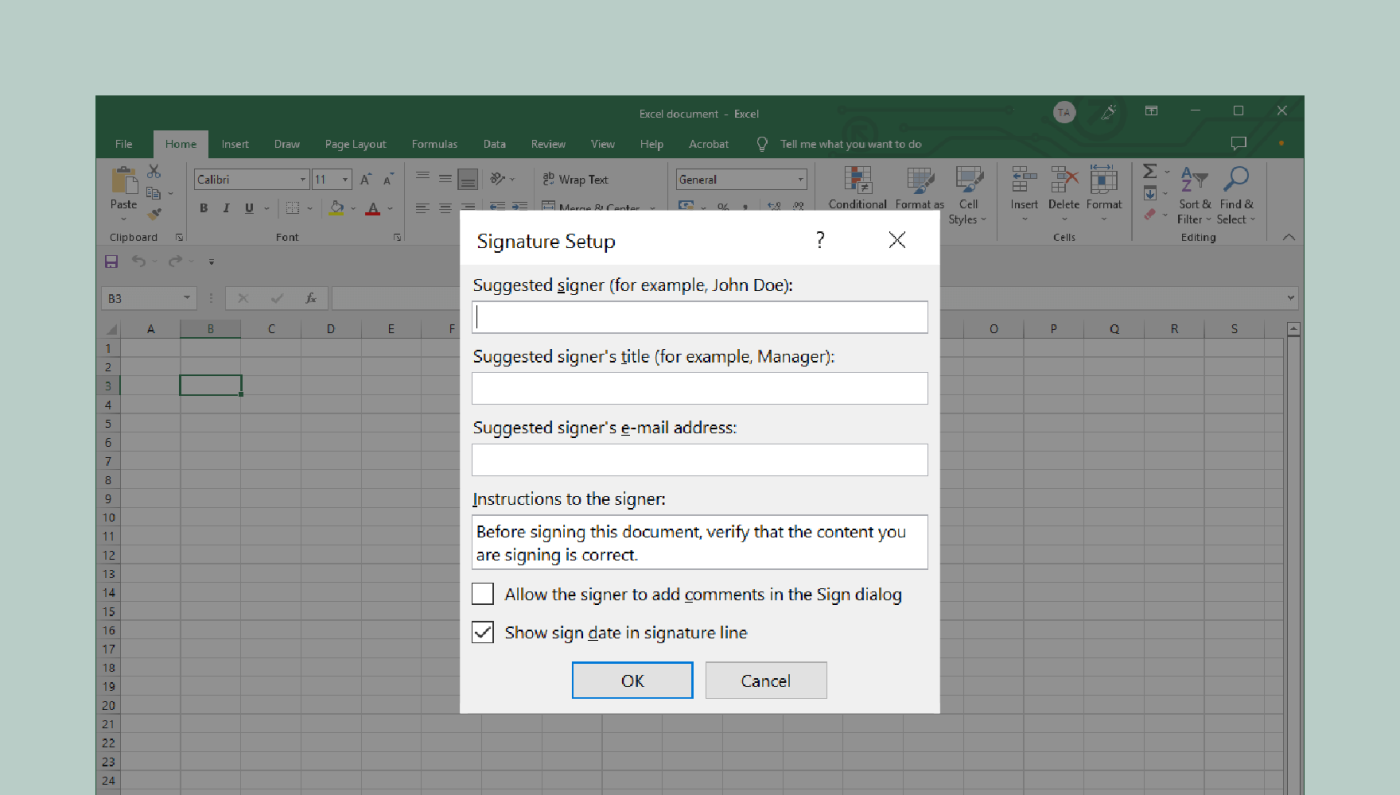
- Suggested signer’s title. The job role of the recipient, e.g., “manager” or “CEO.”
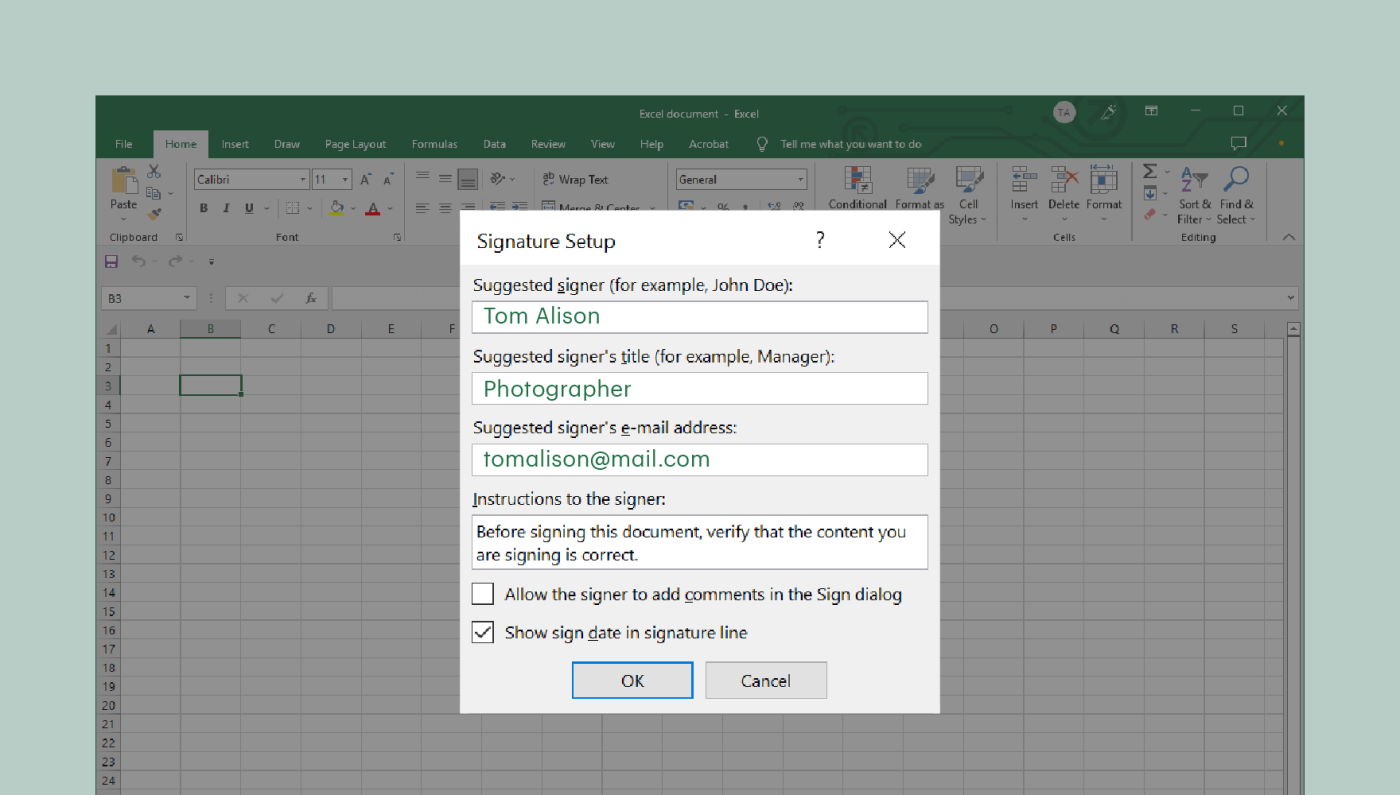
- Suggested signer’s e-mail address. The email address of the recipient.
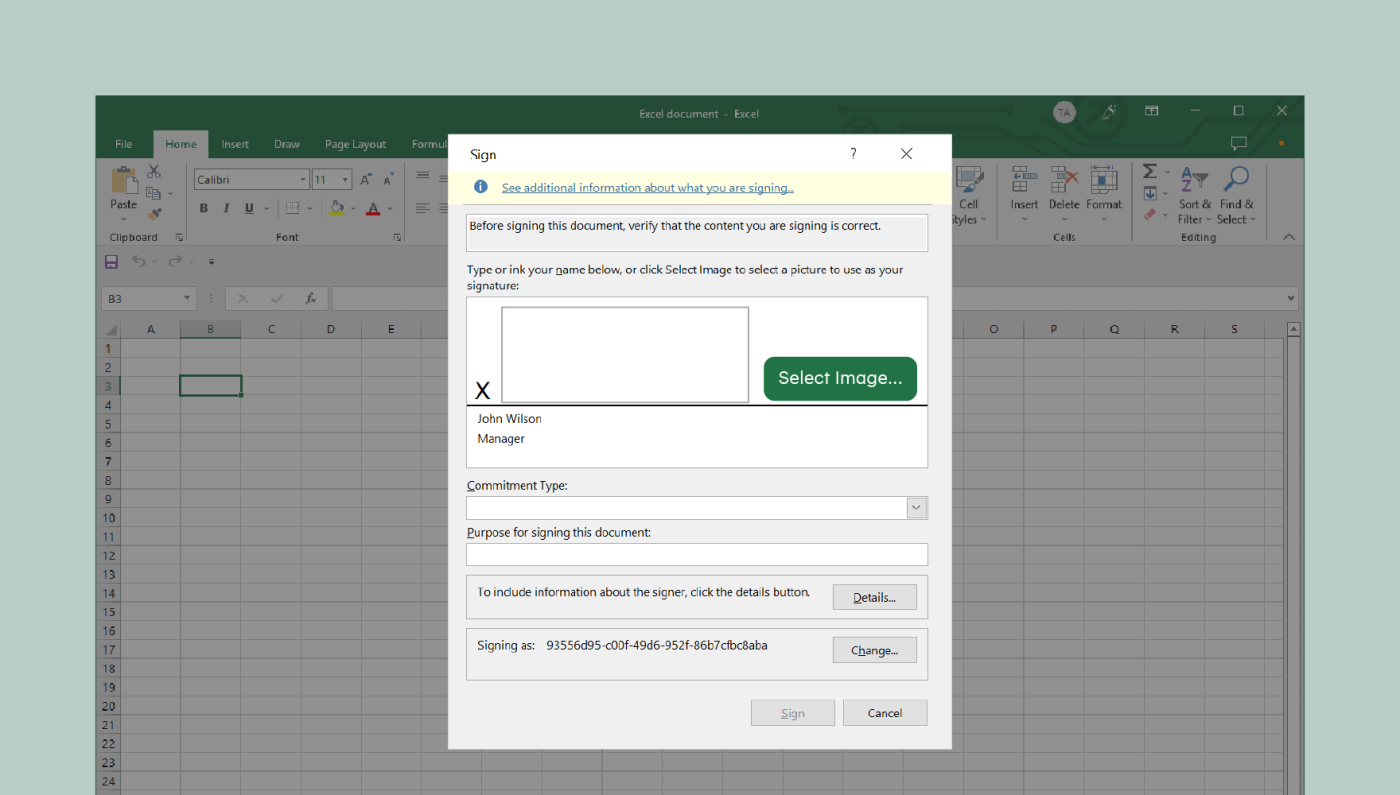
- Instructions to the signer. Any instructions you wish to include.
5. Tick the checkboxes at the bottom of the pop-up (“Allow the signer to…” and “Show sign date…”) if you want to show the signing date and/or allow the signer to add comments and click OK.
6. Double-click on the signature line (or right-click and select Sign). You may be prompted to save the document.
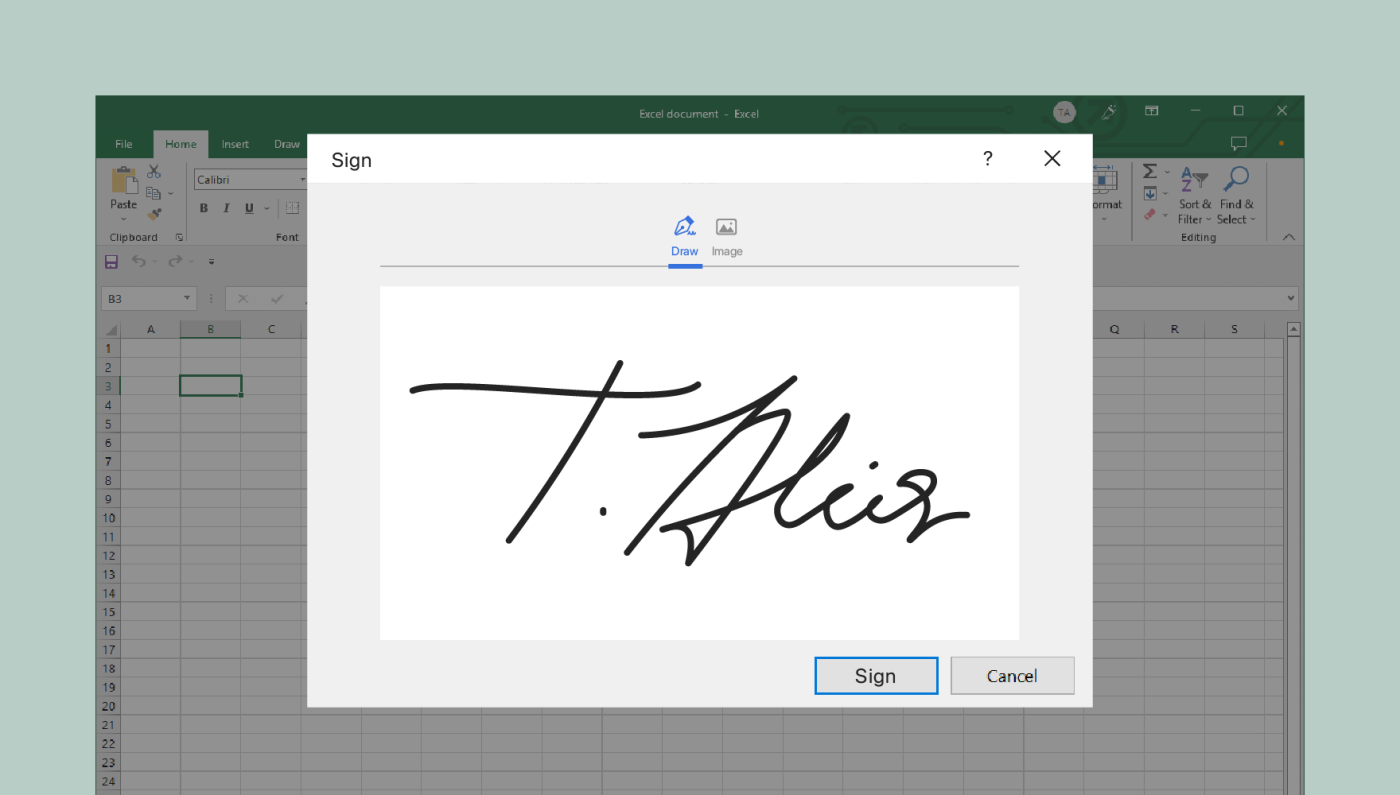
7. If you do not have any digital certificates currently available, a pop-up will appear, asking if you want to Geta Digital ID, if you wish to do so, select Yes and follow the instructions.
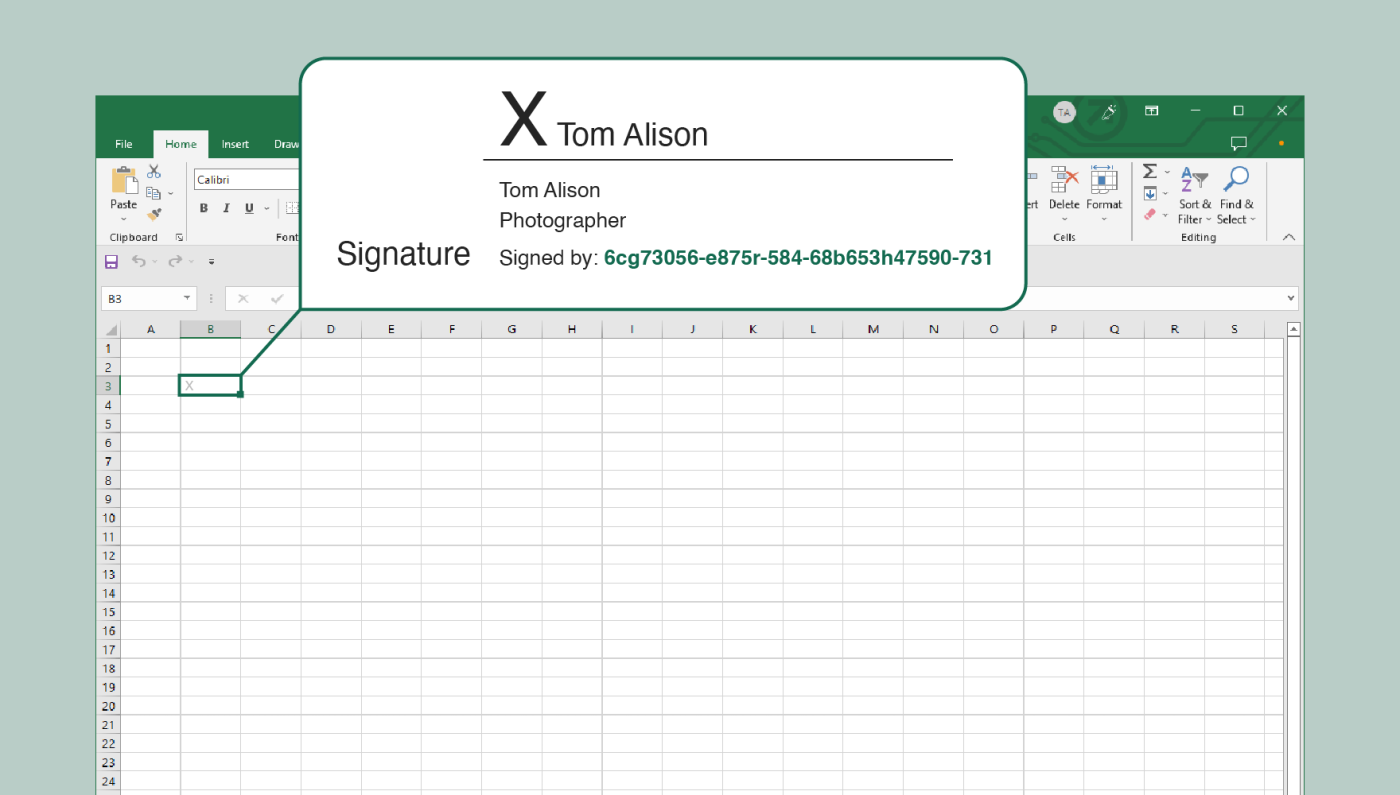
Alternatively, you can create your certificate using these instructions.
8. Enter your name into the field in the pop-up (or hit the select image button), including any additional details if you wish to do so, and click Sign.
2. Sign using an invisible signature
If you don’t want to add a signature directly to an Excel spreadsheet, you can use an invisible signature to an Excel workbook instead.
This type of signature can be used to ensure the authenticity and integrity of the document, but they don’t have a signature line.
To create an invisible signature, follow the steps below:
- Open the Excel document.
- Select the File tab and choose Protect Workbook > Add Digital Signature.
- Complete the pop-up fields and click Sign on the Sign dialog box.
Keep in mind that signing a document in this way will transform the file into a read-only format to prevent modifications and tampering.
Viewers will also be able to click on the View Signatures button to see who signed the document.
3. Sign by attaching an Excel file to your PandaDoc document
While signing directly in an Excel worksheet might seem convenient, it can also be a hassle. Security a signature certification to guarantee authenticity can be a daunting task.
If you’d rather avoid purchasing a certificate from a certification authority, you can partner with a company like PandaDoc to ensure that all captured signatures are provable and authentic.
To do this, you’d need to create a PandaDoc document and attach any relevant Excel files so that recipients can review the contract and the attached file before signing in full.
Follow the steps below to add an Excel file to PandaDoc:
1. Log into your PandaDoc account.
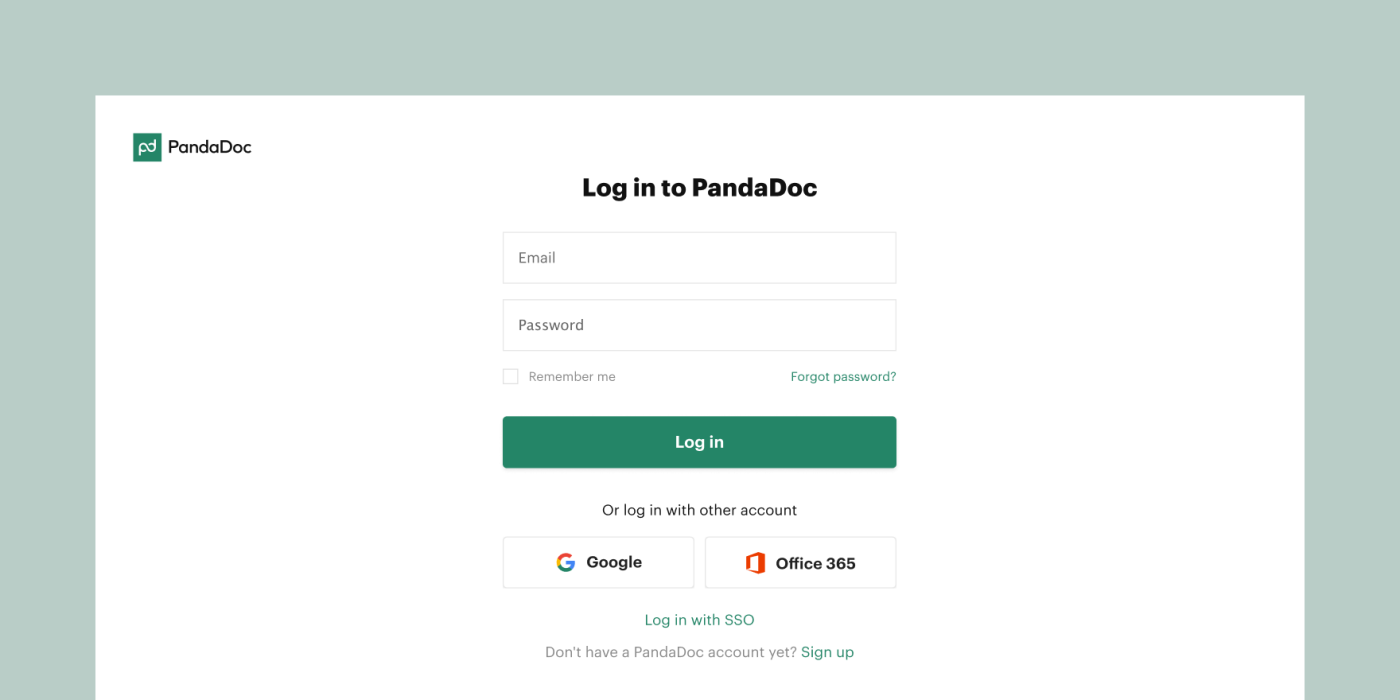
2. Open a document in the Documents (left toolbar) tab or upload one by selecting New document (top right corner).
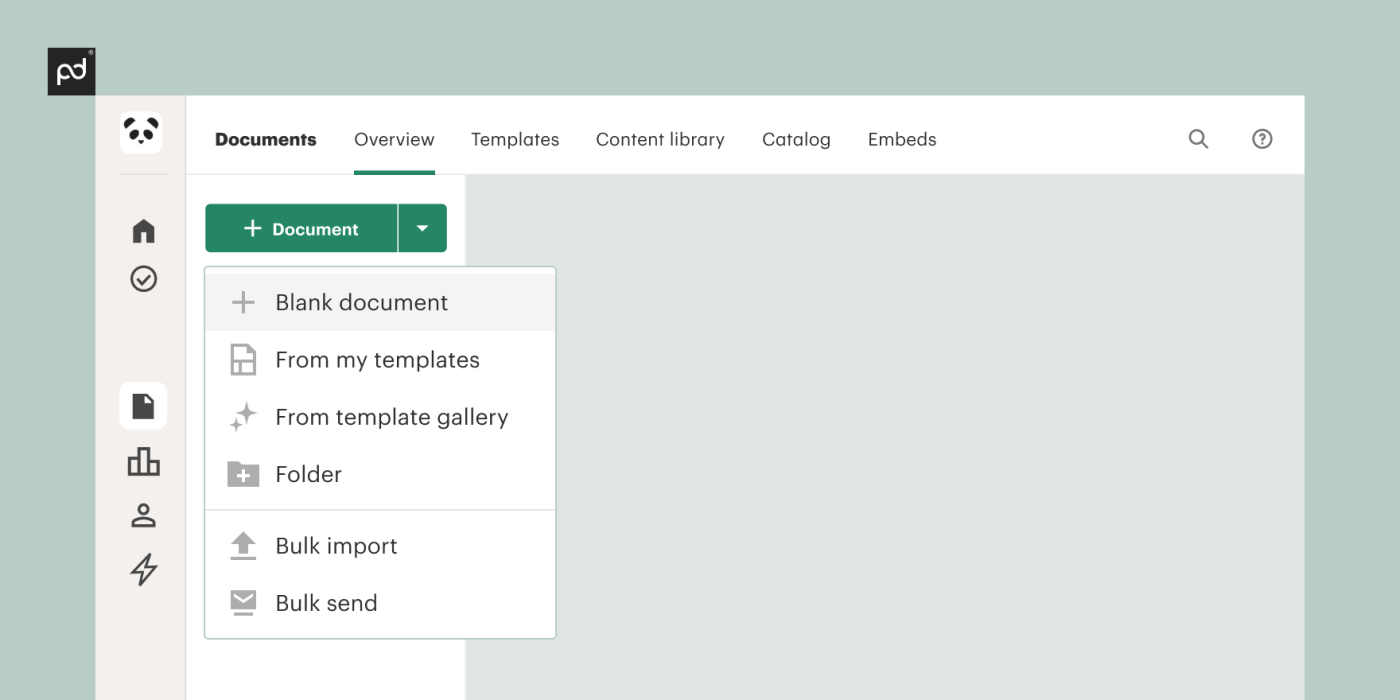
3. Select More from the right-hand toolbar in the document editor.
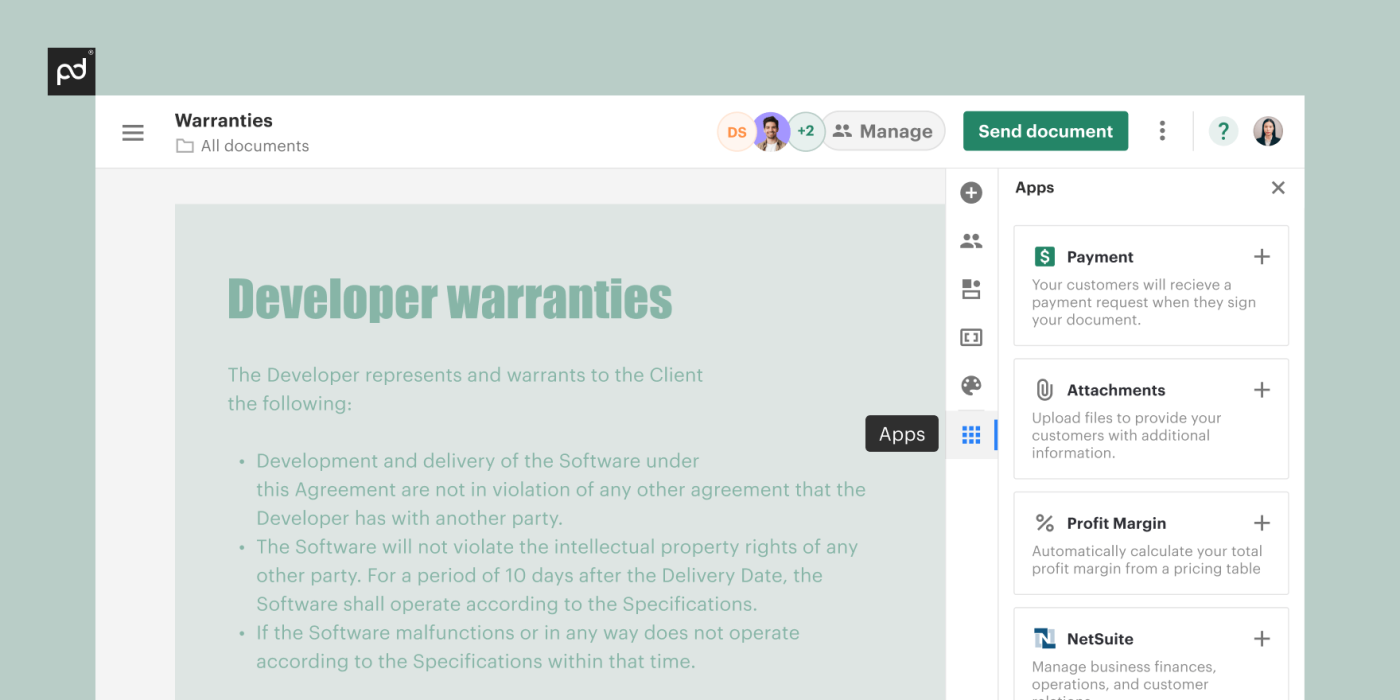
4. Choose the Attached files.
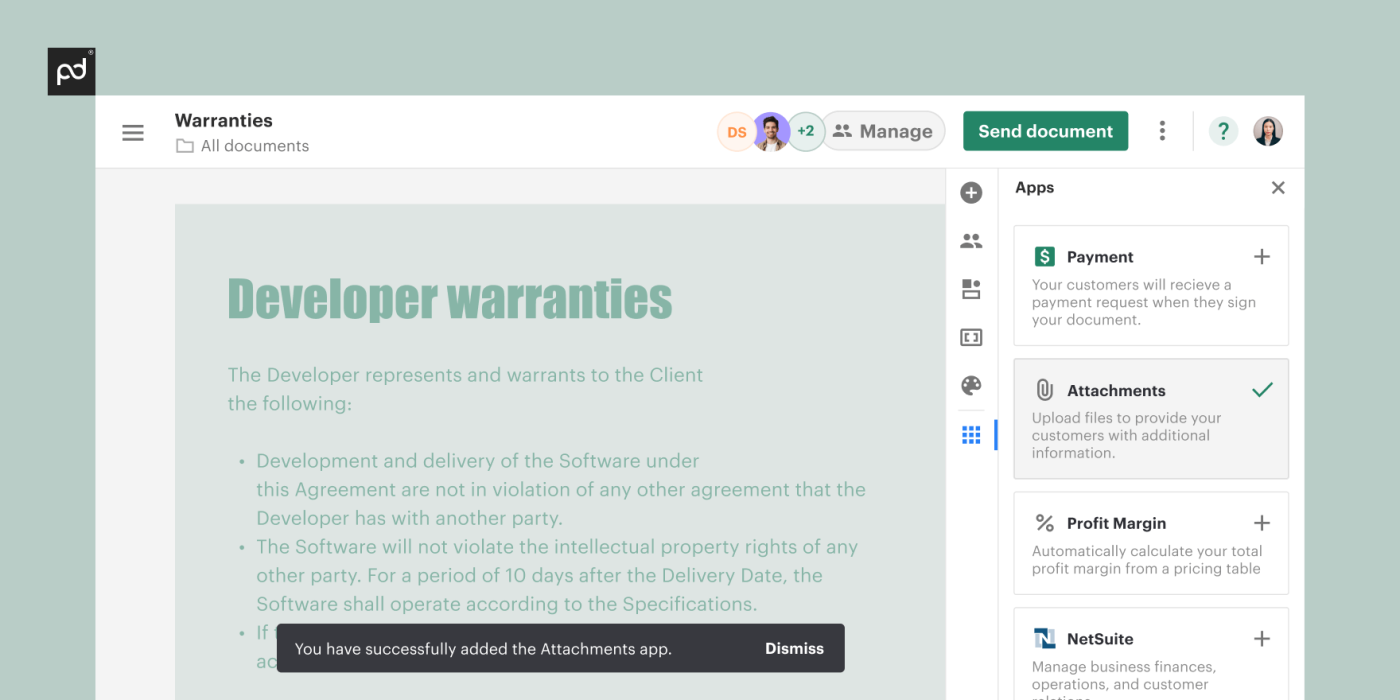
4. Click Upload Attachment.
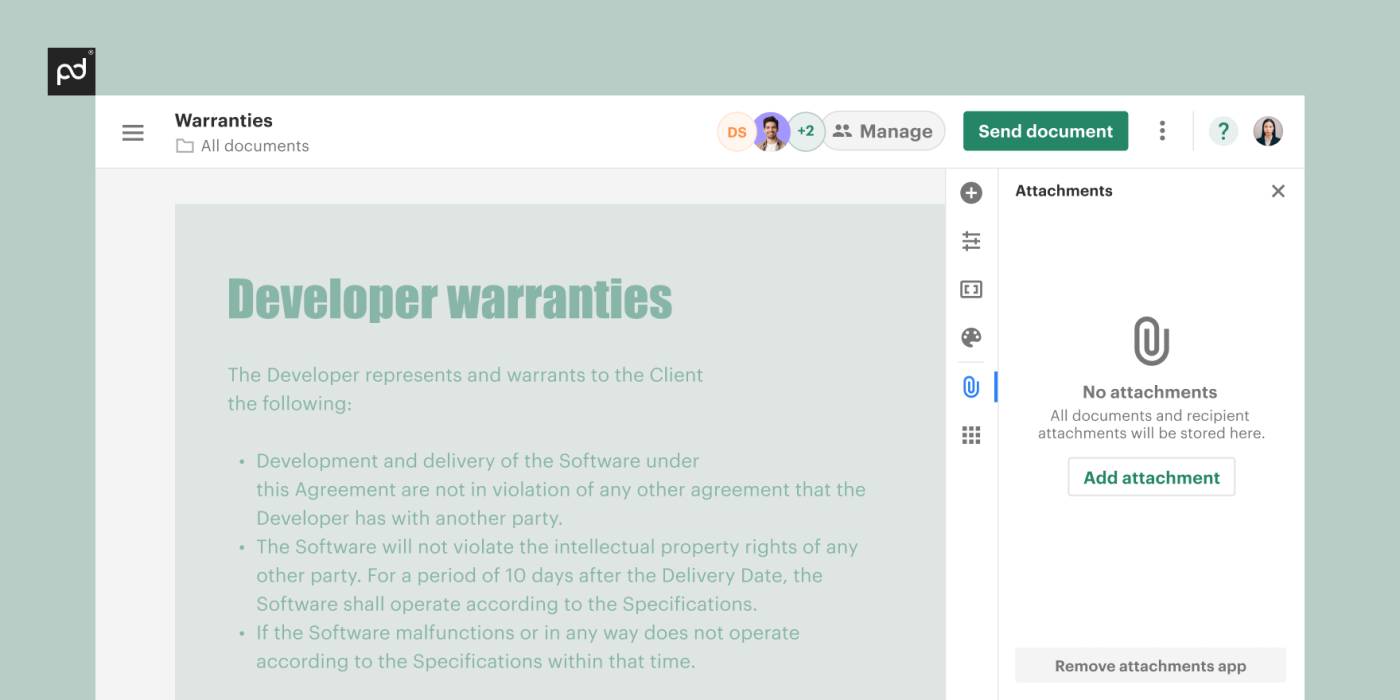
5. Click Select file and add the document you want to sign.

You can find more step-by-step tutorials and walkthroughs for using PandaDoc in the support and community portal.
Further reading
What is an electronic signature?
In a nutshell, an e-signature is a virtual mark affixed to a document to signify approval.
Let’s pretend that somebody receives a contract as an email attachment. They open up the document, add a photocopied image file of their signature image to the bottom of the final page, and send it back.
They’ve just electronically approved the document.
It’s possible to add further layers of security to this process with specialized tools. After a document is signed electronically, a certificate generates automatically, and a copy is stored as a PDF in the cloud.
Generally speaking, electronic signatures are just as secure as typical handwritten signatures, if not more so. Governments worldwide have introduced numerous pieces of legislation (eIDAS, ESIGN Act, Electronic Communications Act, etc.).
Furthermore, electronic signatures typically accompany an extensive “audit trail,” such as emails, which makes them very easy to verify.
See Also:
How to create an electronic signature and e-sign your documents for free (6 methods)
What is a digital signature?
A digital signature is a highly secure type of electronic signature. Digital signatures rely on what’s called a public key infrastructure (PKI) to verify documents.
It’s near-impossible to forge a digital signature or amend a document once signed.
Individuals that want to use digital signatures must first purchase a digital certificate (or digital ID) from a “certificate authority.”
Whenever the certificate holder approves a contract, proposal, invoice, etc., they affix this digital ID to the document, creating a unique encrypted file.
This file can only be decrypted with a public key explicitly tied to that individual.
To add a digital signature in Excel (which will automatically recognize any digital certificates stored on your computer), you will need to purchase an ID first or create your own.
Try PandaDoc for free
PandaDoc is the web’s leading contract management solution. You can use it to quickly and securely add signatures and signature fields to your documents.
You’ll also have access to a suite of time-saving tools like document templates, analytics, automation options, and more.
Sign up for our “forever free” plan or take advantage of a 14-day trial of a premium package.

